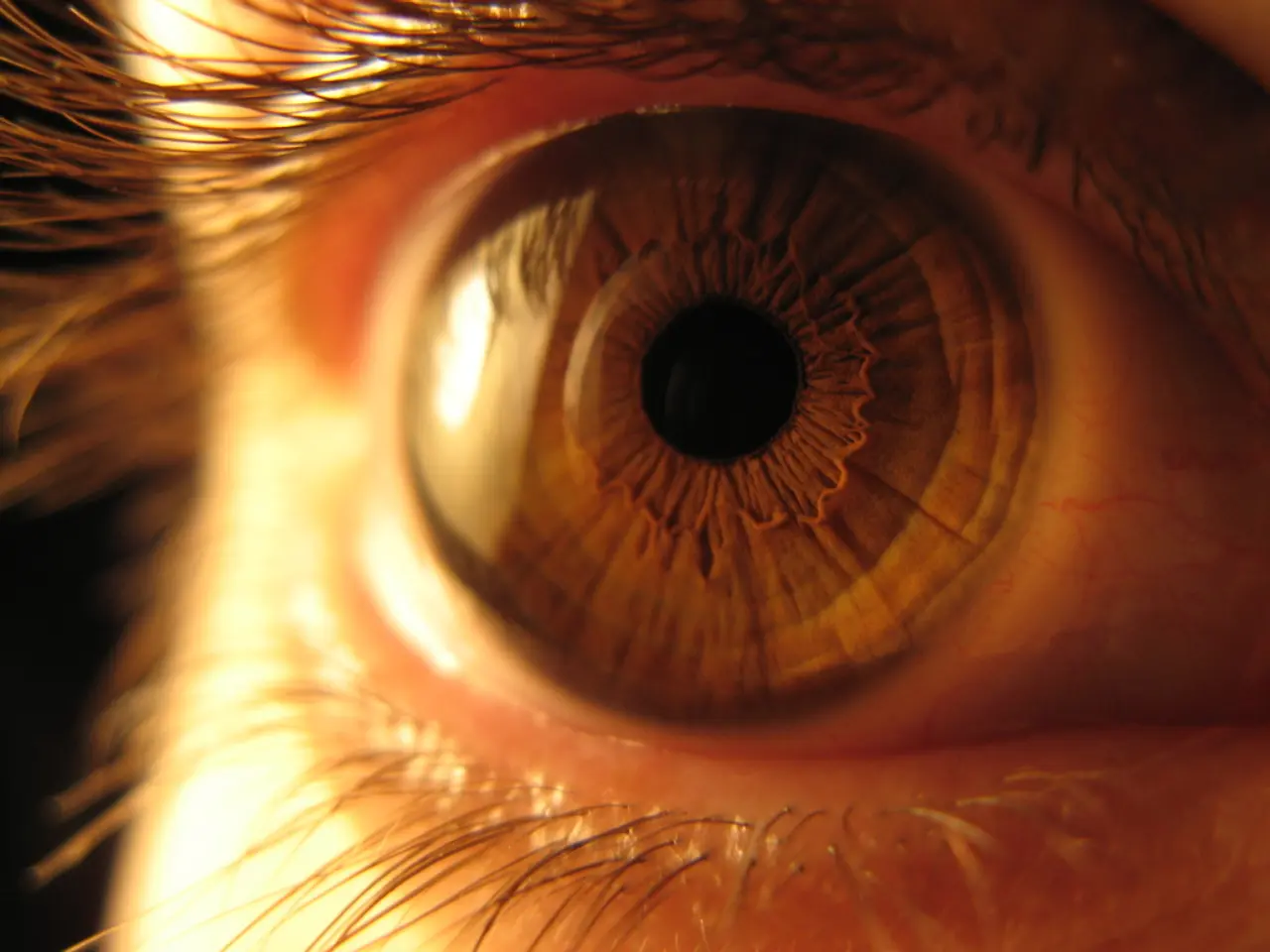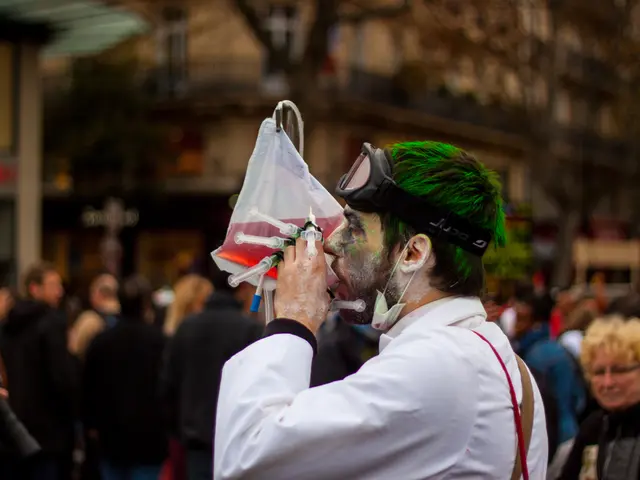Understood eye hooding: recognised condition, potential origins, remedial strategies
In the world of eye aesthetics, three conditions often come up in conversation: hooded eyes, dermatochalasis, and ptosis. Although they may seem similar, each has distinct causes and effects.
Hooded eyes are a cosmetic and functional condition where excess skin from the brow and upper eyelid area folds downward over the eyelid crease, partially covering the eyelid. This appearance can be due to genetics, aging (with skin laxity and eyebrow sagging), or other factors like trauma or certain diseases. It can affect makeup application and in severe cases, upper vision.
Dermatochalasis, on the other hand, is a specific medical term referring to excess upper eyelid skin causing drooping but not involving the underlying eyelid muscle. It results from aging changes where skin loses elasticity, and the eyelid skin bunches. This can create a "heavy" eyelid feeling and may cause the forehead muscles to compensate by lifting brows, leading to muscle strain and headaches.
Ptosis (blepharoptosis) involves a drooping not of the skin but of the actual upper eyelid muscle (levator muscle) that lifts the eyelid. The eyelid margin itself droops downward due to muscle weakness or nerve issues, potentially obstructing vision. Ptosis differs from dermatochalasis because it is muscular rather than skin-related.
In summary:
| Condition | Cause | Anatomical feature | Effects on eyelid | |----------------|---------------------------------------|----------------------------|------------------------------------------| | Hooded eyes | Excess skin fold often with brow sagging | Skin and brow tissue fold | Skin covers eyelid crease; cosmetic + functional impact | | Dermatochalasis | Excess upper eyelid skin | Redundant eyelid skin | Heavy eyelid sensation; skin droops over eye | | Ptosis | Weakness of upper eyelid muscle | Drooping of eyelid margin | Eyelid margin droops, possibly blocks vision |
Understanding these conditions can help individuals make informed decisions about treatments. From makeup techniques and nonsurgical treatments like injectable fillers to surgical procedures like blepharoplasty, there are various options available. However, it's crucial to consult with a healthcare professional to determine the best course of action based on individual needs and circumstances.
[1] Mayo Clinic. (2021). Hooded eyes. Retrieved from https://www.mayoclinic.org/healthy-lifestyle/adult-health/expert-answers/hooded-eyes/faq-20058102 [2] American Academy of Ophthalmology. (2021). Dermatochalasis. Retrieved from https://www.aao.org/eye-health/diseases/dermatochalasis-droopy-eyelids [3] American Academy of Ophthalmology. (2021). Ptosis. Retrieved from https://www.aao.org/eye-health/diseases/droopy-eyelid-ptosis [4] American Academy of Facial Plastic and Reconstructive Surgery. (2021). Hooded eyes. Retrieved from https://www.aafrs.org/patient-resources/cosmetic-procedures/hooded-eyes [5] National Library of Medicine. (2021). Dermatochalasis. Retrieved from https://medlineplus.gov/ency/article/001174.htm
- While science focuses on multiple medical conditions, such as bipolar, depression, nsclc, and multiple sclerosis, understanding eye health is equally important, especially conditions like hooded eyes, dermatochalasis, and ptosis.
- Just as predictive therapies and treatments are essential for managing health and wellness issues like skin care, fitness, and exercise, it is crucial to consider various treatment options for eye conditions such as hooded eyes.
- In cases of hooded eyes, medical-condition contributors like trauma or certain diseases must be considered during consultations with healthcare professionals for appropriate treatment decisions.
- The science behind dermatochalasis, the accumulation of excess upper eyelid skin, shows that it shares similarities with predictive aging changes, as both involve a loss of skin elasticity.
- Ptosis, the drooping eyelid muscle (levator muscle), causes visual obstruction; science reveals that it differs from dermatochalasis in being muscular rather than skin-related.
- Therapies and treatments for eye conditions like ptosis can range from nonsurgical procedures, like injectable fillers, to surgical interventions, like blepharoplasty; science emphasizes the necessity of consulting with a healthcare professional for personalized treatment plans.
- Fitness and exercise may not directly help with eye health issues like hooded eyes, dermatochalasis, and ptosis, but maintaining overall health can indirectly support optimal eye health and wellness.






